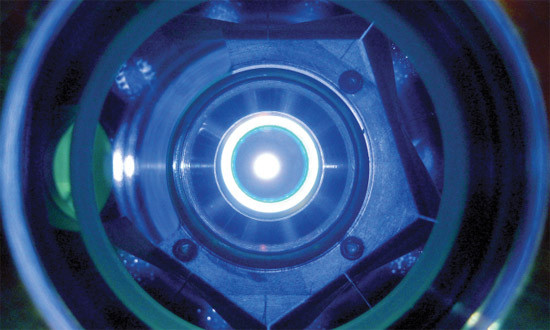The World’s Most Powerful Lasers Set To Tear Apart The Vacuum Of Space-Time Itself

Hoping to conjure enough energy that it ought to be able to pull “virtual” particles out of the vacuum of space-time – quantum mechanics implies that space-time can never truly be ‘empty’ – the Extreme Light Infrastructure (ELI) project is an undeniably tantalising (yet mind-numbingly complex) prospect.
“We are taught to think of the vacuum as empty space,” Professor Wolfgang Sandner, president of the German Physics Society, has commented previously. “But it seems even a true vacuum is filled with pairs of molecules that come into our universe for an extremely short time. An extremely powerful laser should be able to pull these particles apart and keep them in existence for longer.”
 ELI's 'Beamlines' facility in Prague, Czech Republic will house one of three initial lasers. A fourth is expected to be commissioned in 2017.Plans to build a gigantic laser that will combine ten laser beams into a single 'super' beam are still unfolding, though the kind of power such a laser could produce is so intense at 200 petawatts that it's only equivalent is the measure of the amount of power the Earth receives from the sun, and it'll all be focused on a speck smaller than the head of a pin. The theory goes that in firing the 200 petawatt pulses for an incomprehensibly small amount of time - just 1.5 x 10-14 of a second, or the amount of time it takes for light to travel from one side of a human hair to the other, if you shave the hair down by 90% - it’ll allow scientists to 'rip apart' the fabric of space to uncover the ‘ghost particles’ of matter and antimatter long thought to exist within the nothingness of space.
ELI's 'Beamlines' facility in Prague, Czech Republic will house one of three initial lasers. A fourth is expected to be commissioned in 2017.Plans to build a gigantic laser that will combine ten laser beams into a single 'super' beam are still unfolding, though the kind of power such a laser could produce is so intense at 200 petawatts that it's only equivalent is the measure of the amount of power the Earth receives from the sun, and it'll all be focused on a speck smaller than the head of a pin. The theory goes that in firing the 200 petawatt pulses for an incomprehensibly small amount of time - just 1.5 x 10-14 of a second, or the amount of time it takes for light to travel from one side of a human hair to the other, if you shave the hair down by 90% - it’ll allow scientists to 'rip apart' the fabric of space to uncover the ‘ghost particles’ of matter and antimatter long thought to exist within the nothingness of space.
But as the end of 2012 approaches, we're still no closer to hearing where exactly the construction of such a phenomenal piece of machinery will take place – the ELI did report plans to reveal its location by the end of this year.
Still, it's a project stuck in our memory since the European Commission first approved the construction of the first three massive research lasers early last year, and one we can't help relay to you all now. Costing around $400 million each and set to be completed by 2015 in the Czech Republic, Hungary and Romania, each of the first three lasers will be capable of firing already immensely powerful pulses of around 10 petawatts (1016 watts).
As well as exploring some of the vaguer aspects of quantum mechanics, Thomas Heinzl, associate professor of theoretical physics at Plymouth University sums up the potential the ELI project has for truly ground-breaking discoveries. “ELI is going to take us into an uncharted regime of physics. There could well be some surprises along the way.”
Richard Birkett
Source: ELI

